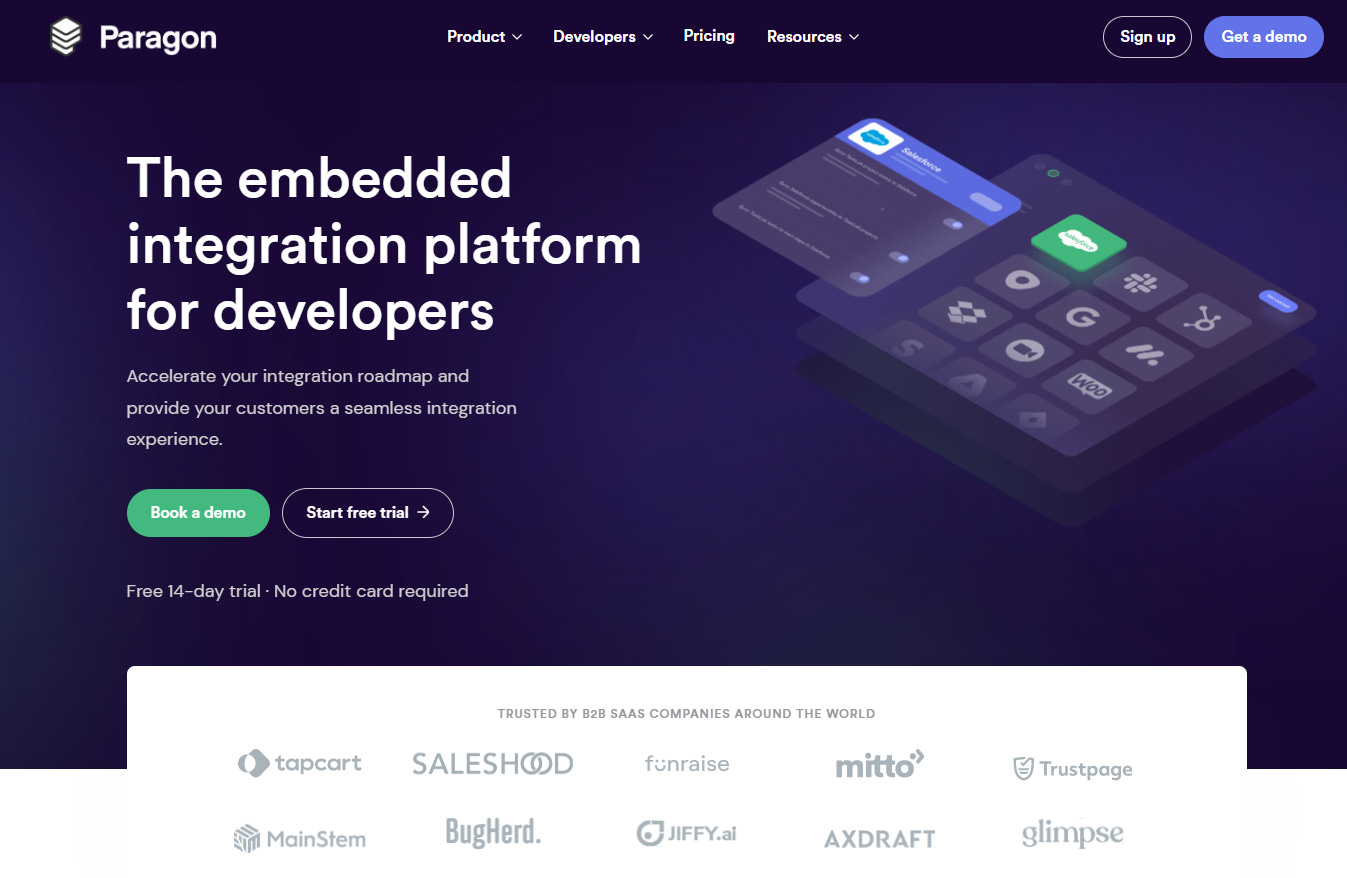Happy Thanksgiving to US readers! Thank you (all) for being readers. I'm launching GPT-VC on Product Hunt on Saturday! Be on the lookout and hope you'll support then!
The Quild Future Unicorn is a weekly product-focused note highlighting one early-stage startup with statistically significant signals of becoming a unicorn.
Paragon is an embedded integration platform for SaaS apps, enabling companies to build products that integrate with the SaaS ecosystem. With Paragon, software companies can integrate with hundreds of different SaaS apps in minutes while providing their customers with a seamless, unified integration experience.
Founders: Brandon Foo (CEO), Ishmael Samuel (CTO)
Signals:
Repeat founders
Brandon co-founded CTRL LA, a dev studio, and Polymail, an email platform for teams
Ishmael co-founded CTRL LA and Learn to Freelance, an educational resource to teach entrepreneurs
Fast team growth
Grew 1.7x YoY to 50+ employees
And still hiring
Top university alumni
Brandon graduated from UCLA
Embedded iPaaS for SaaS
Product notes
Pain point and persona
Integrations are a must to manage SaaS sprawl
The number of SaaS apps used by companies 10x'ed to 110 apps over 5 years from 2016 to 2021. Enterprises have even more with ~240 apps on average. This has naturally led to a need for integrating SaaS apps. Or else 50% of a knowledge worker's job would be manually copying data. Take for example a salesperson capturing leads into their CRM. They'd have to manually download CSVs of leads generated from Marketo campaigns, then reformat the data so it could be uploaded to Salesforce. Every, single, time. Hence, we see the rise of iPaaS companies like Zapier and Workato. SaaS buyers/end-users use iPaaS tools to connect two or more SaaS apps together to copy data (like in the case of the salesperson above) or to start a workflow.
Shifting buyer preferences and the need for vendor control
The challenge with traditional iPaaS is twofold. First, the integration burden is on SaaS buyers/end-users. Second, there is less control over custom data fields and workflows. There is a growing expectation from SaaS buyers that SaaS vendors have out-of-the-box integrations, especially if the software costs >$100K annually. The burden is shifting to SaaS vendors but the rewards are worth it. A study by Profitwell, a company measuring SaaS company metrics, shows that:
Products with at least one integration have 10–15% higher retention, and 18-22% higher for products with four or more integrations
Willingness to pay is 20% higher for products with 5-10 integrations, and 30%+ for products with 11+ integrations
But the cost of building and maintaining native integrations in-house for SaaS vendors is expensive. It takes away developer time to build core product features and is an ongoing distraction to continually maintain it. And no developer wants to build a career out of maintaining integrations.
Traditional iPaaS players like Tray, Workato, and Alloy recognize the shift and have launched their own embedded iPaaS products.
Product
Embedded iPaaS solves this problem by building a customizable iPaaS platform to build native integrations. The persona shifts from the citizen developers employed by SaaS buyers in traditional iPaaS to developers (and service teams) employed by SaaS vendors in embedded iPaaS. There's decent overlap between the two iPaaS categories so we'll highlight features that distinguish embedded iPaaS.
Native experience
An embedded iPaaS is configured to sit natively (i.e. it feels like a single app) within a SaaS vendors' app interface. Authentication and customization are handled in the same interface. From an end user's perspective, this is better because there won't be a need to log into a separate iPaaS platform.
Custom integrations with developer control
With traditional iPaaS, the integration endpoints and roadmap are not within the SaaS vendors' and buyers' control. Though to the benefit of traditional iPaaS platforms, like Zapier, they already have a pre-built library of thousands of connectors and endpoints that'll cover 80% of use cases.
Monitoring and debugging
I've built automations on Zapier but I only cared if pre-built integration works out of the box. End users like me won't try to debug and regularly monitor these integrations. When an issue arises, SaaS vendors can troubleshoot better because they manage more of the integration.
GPT-VC is a large language model fine-tuned on venture and startup text. You can access the app here for free (and fun). Here's what it said about managing integrations.
Prompt: Why should developers manage integrations and not ordinary users?
GPT-VC: Because developers are the ones who know how to integrate with other systems. They're also the ones who have access to all of the APIs and SDKs that will be needed for integration. Finally, they're usually more comfortable working in a command-line environment than most users are.









